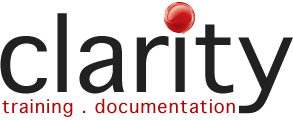5 essential steps to writing clear procedures
The receptionist at your local medical centre isn’t asked to diagnose your condition. Nobody expects the cabin crew to fix technical issues with the aircraft.
Yet so often in the workplace, engineers, scientists, IT experts, business analysts, operations managers, supervisors and others are expected to write policies and procedures, work instructions and all types of business documents. After all, they’re the experts, they’re best placed to pass on their knowledge, aren’t they?
These people are experts at what they do, but very often, creating effective documents isn’t a part of their skill set, or even their interest. So, when they’re asked to write, what do they tend to produce? Complex, techie writing that leads to confusion, mistakes, misunderstandings and many other problems. The hidden costs to the organisation are often very large.
In an ideal world, it would be great to have teams of skilled technical writers who produce all of your documentation, but the reality is your business may not have those resources. So, you work with what you have.
How do you convert your technical experts into technical writers who create clear, user-focused content that your teams can easily access, understand and use?
It’s tricky… After all, technical writing is a specialised profession that takes considerable training and experience to master. But there are things you can do to harness the skills and knowledge of your experts, and create documents that serve your business better. Here are our 5 steps to writing clear procedures...
5 steps to writing clear procedures:
1. Create a documentation standard
This is the basis for ensuring your success. It will provide a level of consistency across all your document writers, regardless of their role, or writing skills
2. Train your technical experts
(or whoever will do the writing) in the art of plain language, document architecture, and your company documentation standard
3. Create templates & model documents
or get an expert to set this up for you
4. Have a review process in place
so that each piece of writing is proof read and edited. This can be done fairly inexpensively, especially if you've covered the first 3 steps well. Ideally, find someone who can provide some coaching and support if it's needed.
5. Test the documents
Get end-users to try them out to check that they can quickly and easily find information and understand it. Make changes based on the feedback, before you finalise and publish.
These 5 steps will help to set you up for more clarity, less mistakes and faster upskilling for your team. Writing clear, effective content isn't as easy as many people expect. I'll be adding some more information about each of the 5 components above, so watch this space for more updates soon.
W. edwards deming
-father of quality management-
"If you can't describe what you are doing as a process, you don't know what you're doing"
If you'd like some help in getting your documentation working for you, contact us and we'll help you get it sorted.
